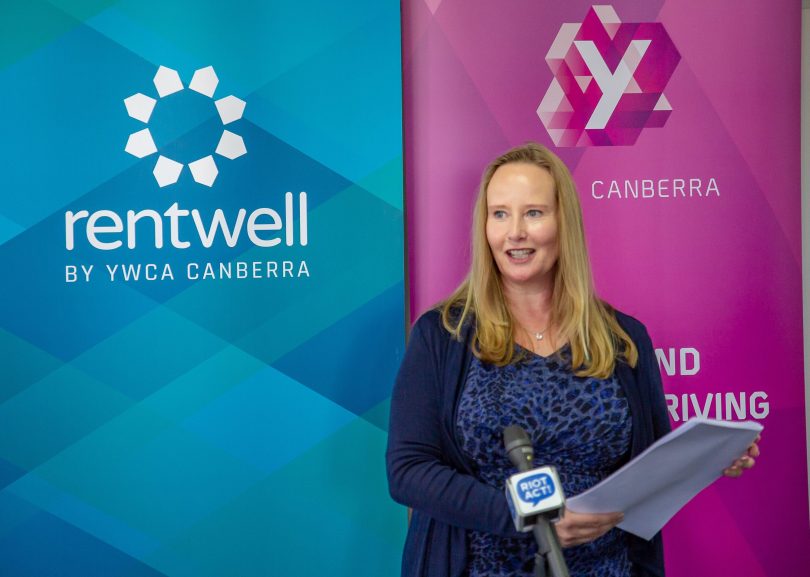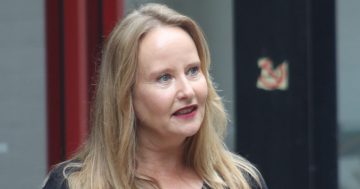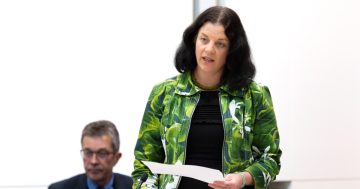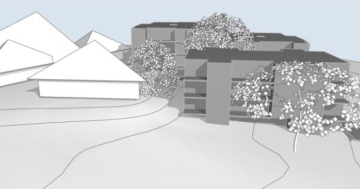
Housing Minister Rebecca Vassarotti has defended the government’s rental scheme despite a slow take-up. Photo: Dominic Giannini.
The ACT Government has defended its affordable rental scheme despite less than 50 per cent of allocated spots being taken up by landlords.
Under the scheme, landlords are exempt from land tax if they rent their property out at less than 75 per cent of the market rate.
But only 54 of the scheme’s 125 places had been taken up when the government announced it would be extending the program indefinitely and increasing the number of places to 250 last week.
CEO of ACT Shelter Travis Gilbert said more advertising through real estate sites and other media was needed to raise awareness of the scheme to help increase its uptake.
Mr Gilbert called for removing the scheme’s cap and said that while numerous subsidies were already in place to entice landlords to offer affordable rent, schemes used in other jurisdictions across Australia should be investigated by the ACT Government.
“When we are talking about the most expensive rental market in Australia, maybe it is time to look at some of those private rental assistance products that are available and do a cost-benefit analysis on those,” he said.
It costs around $46,000 to rent a property in Canberra’s inner north, and if the government pays a third of that, it is a $15,000 subsidy for a 12-month outcome, Mr Gilbert said.
“When you are looking at the private rental market, and the standard lease is six to 12 months, it is a lot of investment for a pretty short-term social outcome,” he said.
“Maybe we would be better off investing in not-for-profit social housing or building social housing in greater quantum.”

CEO of YWCA Frances Crimmins said the organisation was on track to reach 100 Rentwell properties within the next 12 months. Photo: Region Media.
Minister for Homelessness and Housing Services Rebecca Vassarotti said the land tax exemptions would not solve rental affordability in the ACT but were important nonetheless.
“[It] is a critical scheme to transform the view of housing as a right and community good, rather than a vehicle for wealth generation,” she told Region Media.
“It is not just a tax incentive, it is a way to empower landlords to make a meaningful difference for those in need.”
According to SQM Research’s April data, Canberra is still the most expensive city in Australia to rent a house or unit.
The average house for rent in the ACT costs around $700 a week at the moment, but there are few houses vacant in the Territory. Over the past 12 months, house rents in Canberra have risen 9.2 per cent, and units 5.8 per cent. The number of properties available in the ACT dipped under 500, equating to a vacancy rate of just 0.7 per cent.
Ms Vassarotti said there needed to be opportunities available for landlords who want to make a difference and support our community as Canberra’s rental markets squeeze out low and middle-income earners.
She also defended doubling the number of eligible places, as opposed to offering higher incentives or lowering the eligibility rate, despite the low take-up.
“There has been a steady growth recently of landlords opting in, so we need to plan ahead of continued growth,” she said.
“Raising the cap will mean that Canberran landlords can join the scheme when they are ready.
“With housing prices continuing to rise, and rentals becoming more unaffordable, we need to make sure this opportunity is available.”

Chief Minister Andrew Barr has flagged moving towards build to rent targets. Photo: Michelle Kroll.
The YWCA has 41 of these 54 properties as a part of its Rentwell program and has a further eight coming online. YWCA CEO Frances Crimmins said she expected the scheme to continue to grow and expects the YWCA to reach its target of 100 properties in the next 12 months.
“People who were in a position to do this already had tenants in their property and a few were waiting until their property was vacant until they joined in,” she said.
Other levers, such as reductions or exemptions of rates, should be looked at if people committed to renting their properties at less than 75 per cent of market rent or lowering rent for five to 10 years under a rent control scheme set by the government, Ms Crimmins said.
Subsidies for the tenant, administered by organisations like the YWCA, were needed to increase affordable rental properties in the ACT, she said.
The ACT Government has been under fire for the long waitlist to access social housing. According to the Community Services Directorate website, as of 17 May, the wait was 1371 days for standard housing, 882 for high needs and 280 for priority housing.
The ACT Council of Social Services has consistently called for an additional 3000 affordable dwellings in the ACT by providing additional land for affordable housing and boosting the supply of social housing from non-government providers.
Chief Minister Andrew Barr said the ACT was heading towards build-to-rent targets to help ease Canberra’s surging rental market, but Ms Crimmins said that it was integral any such scheme targetted the right people.
“If it is going to be for low-income people, that definitely needs to have government control in setting the rent,” she said.
“If it is at the high-end market, that is a different matter. That is not going to help with affordable rental. It will help with availability, but it is not going to touch on the affordability challenges we have.”
The ACT Government has committed to build 400 new dwellings and renew 1000 properties by 2024-25.





















